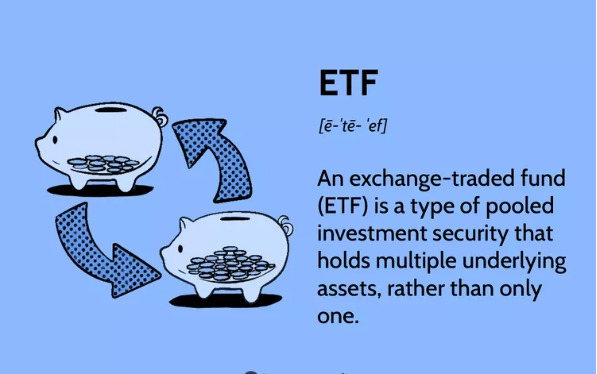ETFs Explained: What They Are & Why They Matter
If you’ve been hearing a lot about ETFs but aren’t quite sure what they are or why everyone seems to be talking about them, you’re not alone. ETFs short for Exchange-Traded Funds have become one of the most popular investment options in recent years. And for good reason.
In this post, we’ll break down what exchange traded fund. are, how they work, and why they could be a smart choice for your investment portfolio.
What Is an ETF?
An Exchange-Traded Fund (ETF) is a type of investment fund that holds a collection of assets like stocks, bonds, or commodities and is traded on a stock exchange, just like a regular stock.
Imagine it like a basket of investments. When you buy an exchange traded fund, you’re buying a slice of that whole basket, which could contain shares from hundreds or even thousands of companies.
✅ Key Features of exchange traded fund.
Here’s why ETFs are so popular among both beginners and experienced investors:
1. Diversification
exchange traded fund typically include many assets, spreading your money across multiple companies or sectors. This reduces your risk compared to buying a single stock.
2. Low Cost
Most exchange traded fund are passively managed, meaning they follow an index like the S&P 500 or Nasdaq 100. This leads to lower fees compared to actively managed mutual funds.
3. Liquidity
Because exchange traded fund are traded on stock exchanges, you can buy and sell them anytime during market hours, just like you would with a stock.
4. Transparency
Most exchange traded fund disclose their holdings daily, so you always know what you’re investing in.
5. Tax Efficiency
exchange traded fund are generally more tax-efficient than mutual funds due to their unique structure, which helps reduce capital gains taxes.
How Do exchange traded fund Work?
Let’s say you want to invest in the top 500 companies in the U.S., but buying shares of each one individually would be time-consuming and expensive.
Instead, you could buy an exchange traded fund like SPY (SPDR S&P 500 ETF). This single exchange traded fund gives you exposure to all 500 companies in the index instantly diversifying your investment.
Types of exchange traded fund.
There are many kinds of ETFs to suit different investment goals:
| ETF Type | What It Tracks | Example |
|---|---|---|
| Stock ETFs | A broad stock market index or sector | VTI (Total Market), QQQ (Nasdaq) |
| Bond ETFs | Government or corporate bonds | BND, AGG |
| Sector ETFs | Specific industries (e.g., tech, healthcare) | XLK (Tech), XLF (Financials) |
| International ETFs | Stocks outside your home country | VXUS, EFA |
| Commodity ETFs | Physical assets like gold or oil | GLD (Gold), USO (Oil) |
| Thematic ETFs | Trends like AI, clean energy, or innovation | ARKK, ICLN |
🆚 exchange traded fund vs. Mutual Funds
| Feature | ETF | Mutual Fund |
|---|---|---|
| Traded Like Stock | ✅ Yes | ❌ No (only at end of day) |
| Fees | Usually lower | Often higher |
| Minimum Investment | Often none | Sometimes $500–$3,000 |
| Tax Efficiency | More tax-friendly | Less efficient |
Who Should Invest in exchange traded fund?
exchange traded fund are ideal for:
-
Beginners looking for a low-cost, diversified portfolio
-
DIY investors who want flexibility
-
Long-term investors building wealth steadily
-
People investing through retirement or brokerage accounts
Getting Started With exchange traded fund
You can start investing in ETFs through:
-
Brokerage platforms like Vanguard, Fidelity, Charles Schwab
-
Trading apps like Robinhood, eToro, or Trove (in Nigeria)
-
Robo-advisors that use ETFs to build your portfolio automatically
Most platforms now allow fractional ETF investing, meaning you can start with as little as $5 or $10.
🏁 Final Thoughts
ETFs are one of the best tools for modern investors—offering simplicity, affordability, and diversification all in one. Whether you’re investing for retirement, education, or just building wealth, ETFs make it easier to start smart and stay consistent.


